

The following was sent to us by Philippe Gimel sketching out his efforts in the Ventoux with some information about his new releases. If some of these vintages seem not-so-current, it is because Philippe belongs to the vanishing school or Rhône vignerons, most famously embodied by Henri Bonneau, who feel wines show best with extended aging both in tank and vat as well as in bottle before they are released.
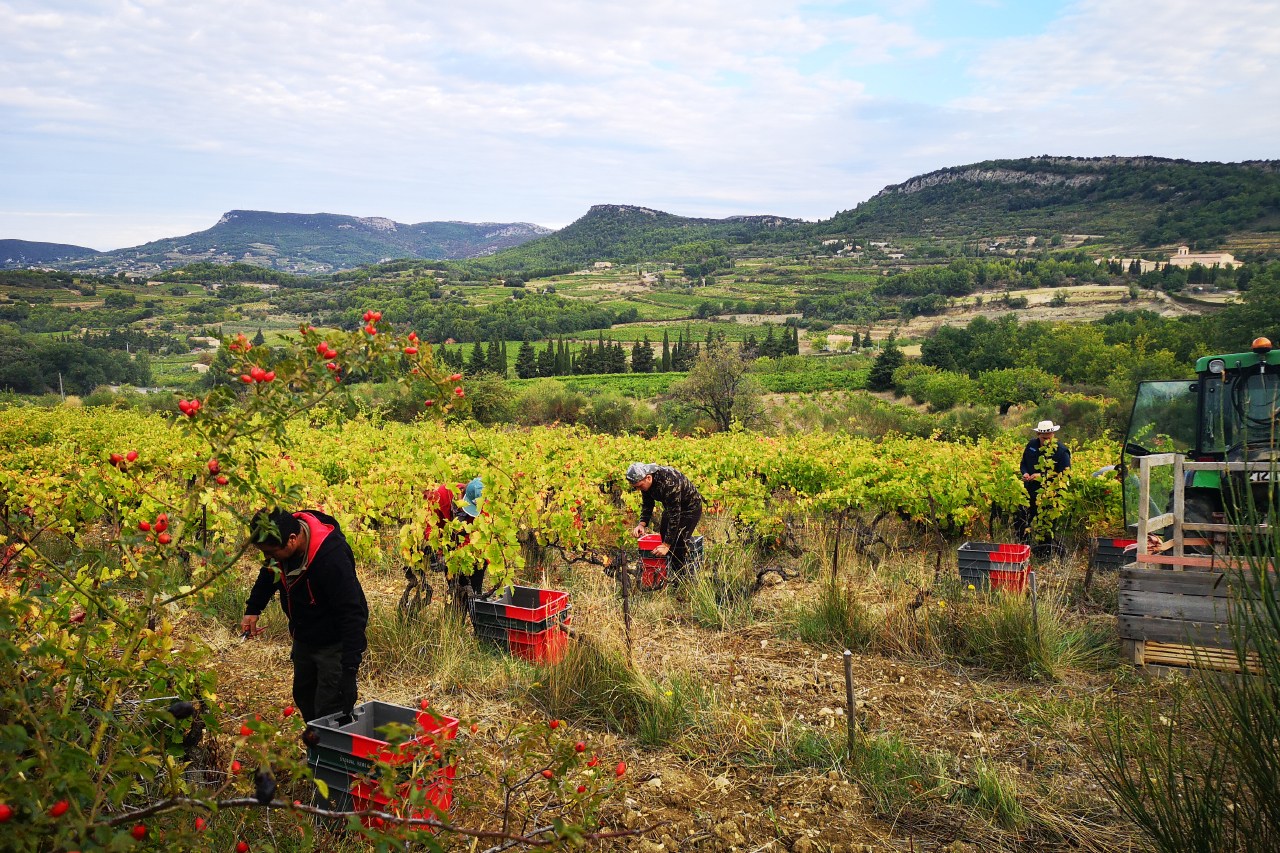
Looking north the saddle of limestone buttes that stretch from the western edge of Mont Ventoux to the Dentelles.
I founded Saint Jean du Barroux in 2003 in the rolling hills between Mont Ventoux and the Dentelles de Montmirail, 2 very famous mountains in Provence where the presence of the largest geological fault of the South-Eastern part of France has shaped the landscape. I am lucky to have 5 geological periods giving us many possibilities of differing terroir expressions. My domain now expends to over 37 hectares, including 21 hectares of vines, 14 hectares of fruit trees and forest, and 2 hectares of garrigue and indigenous plants – all maintained and farmed organically since the start.
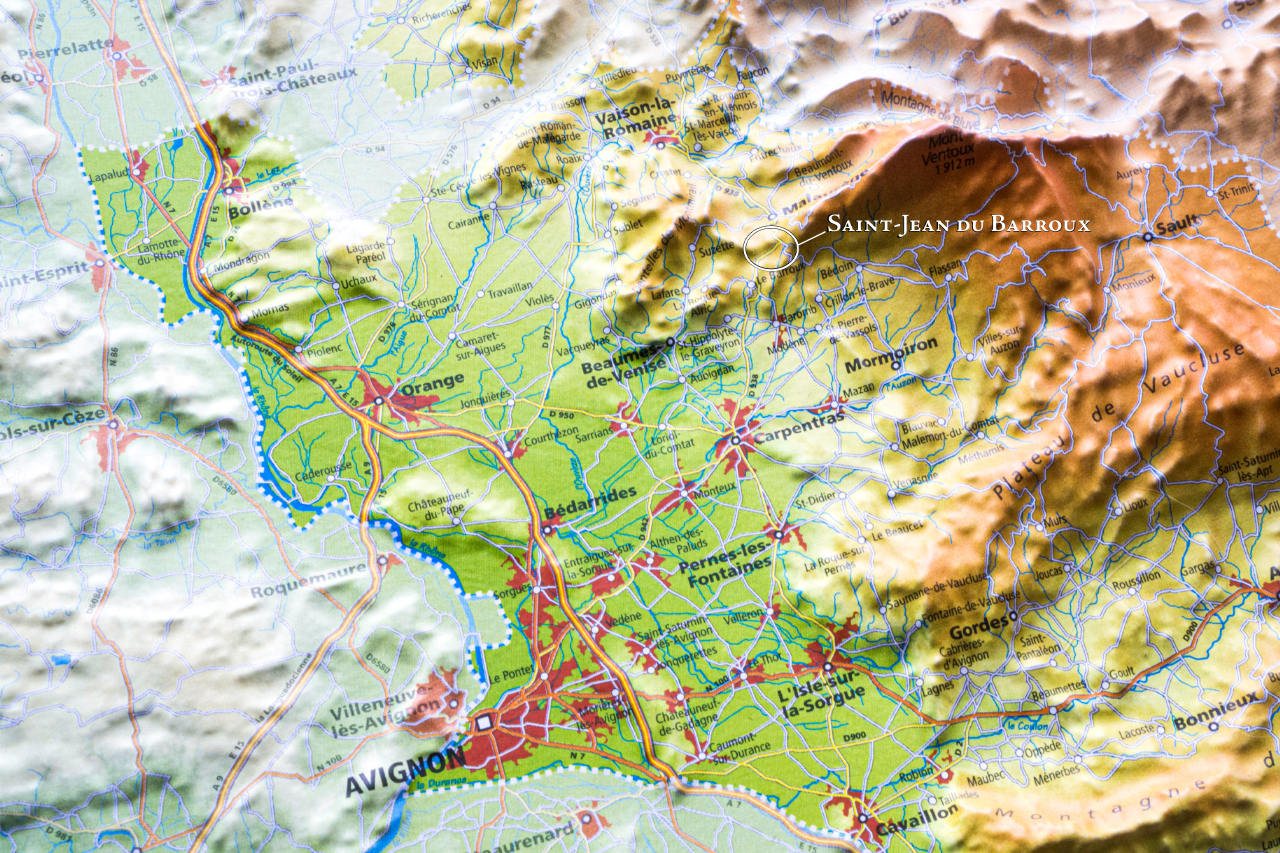
A relief map showing the location of Philippe Gimel’s vineyards in relation to Mont Ventoux and the Dentelles
My vineyards are divided into three areas, two in the village of Le Barroux and one in Malaucene where my cellar is located. The majority of my vines are over 50-years-old and all together they are divided into 99 smaller plots and terraces surrounded by forest. Mont Ventoux has been classified by UNESCO as a reserve of biodiversity, therefore my vines are growing in a wonderfully diverse environment surrounded by other plants and trees. Over the years I have been able to identify over 200 different species of indigenous plants growing in and around my vines and it is my job not only to grow grapes and make wines but to guarantee that this diversity is preserved for future generations.
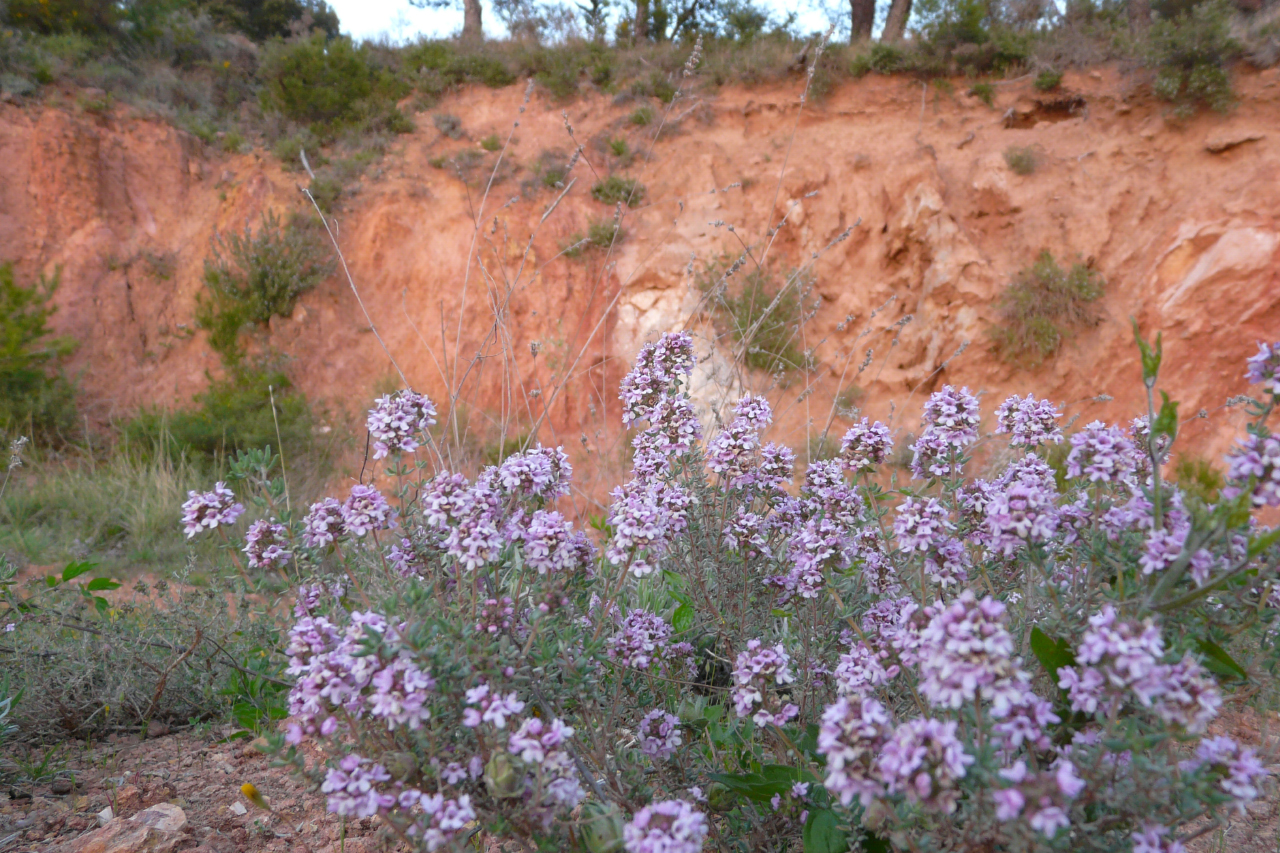
If you visit Philippe he will spend as much time identifying and talking about the indigenous flora than his vines, but you will leave with a better understanding that all this makes his terroir unique.
The symbiosis between my vines and their natural environment means that yields are naturally very low, less than 20hl/ha in an average year and it provides us nearly perfect quality without any rot risk. Therefore we can harvest by hand for one month (or more), selecting every day only the best clusters. As a result, the quality of our wines is very consistent. Also, being situated at 350 meters of elevation with most of my plots north-facing, give lots of freshness to our wines in addition to a long cellaring potential.
What can be said about the quality of different vintages is not relevant to my work. Only the different expressions of my terroirs which are selected as I begin harvest. My focus has always been on making the best wines from each vintage based solely on the quality of my terroir.
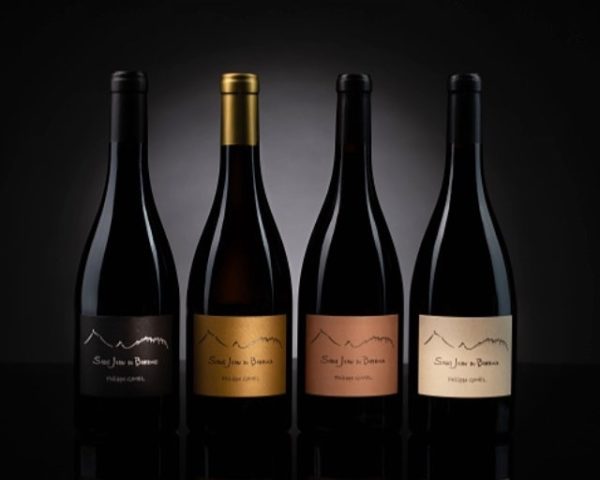
The idea has always been to reveal the potential of our terroir without any make-up – the purity of fruit is our goal.
So each vintage I make five wines. Three are blends of red varieties for various terroirs: La Source, L’Argile, and La Pierre Noire, and I make one red from Syrah only. Finally, I make a small amount of a white wine called La Montagne.
The style of our wines is coming from our special geology, from a selection of different varietals, from the sizes of bunches harvested, but not from the vinification. The process is almost the same for our different red wines. I want the cellar to be almost transparent. Therefore, we have only neutral containers made from cement, steel, or very old wood.
La Source 2018 is very fresh thanks to this cool vintage. We patiently waited to harvest the grapes for this wine beginning in mid-September and finishing in mid-October. Though our “entry” wine, it can be cellared for 10 years without any problem. Its drinkability comes from a selection of plump, juicy berries of Grenache, Carignan, and Cinsault with a short maceration in tank to keep its abundant fruitiness. It is bottled after 1.5 years of aging in tank.
L’Argile is a blend of four red varieties, Grenache, Syrah, Carignan, and Cinsault. Syrah provides more structure and color, but most of all, its higher concentration is due to a selection of smaller berries, therefore it is naturally more tannic. We also select the ripest stems and add them back to the vat to reinforce this wine’s complexity and aging potential. It is bottled after 2 years of aging in concrete tanks. Among our different vintages of Argile produced since 2006, 2017 is maybe the most concentrated one as it was a dry vintage with low yields making the berries even smaller than usual. We have harvested the components of this blend over the period of one month beginning on September 7th and finishing on Oct 6th. It is already a great wine, with smooth tannins. It can be enjoyed now and for 15-20 years.
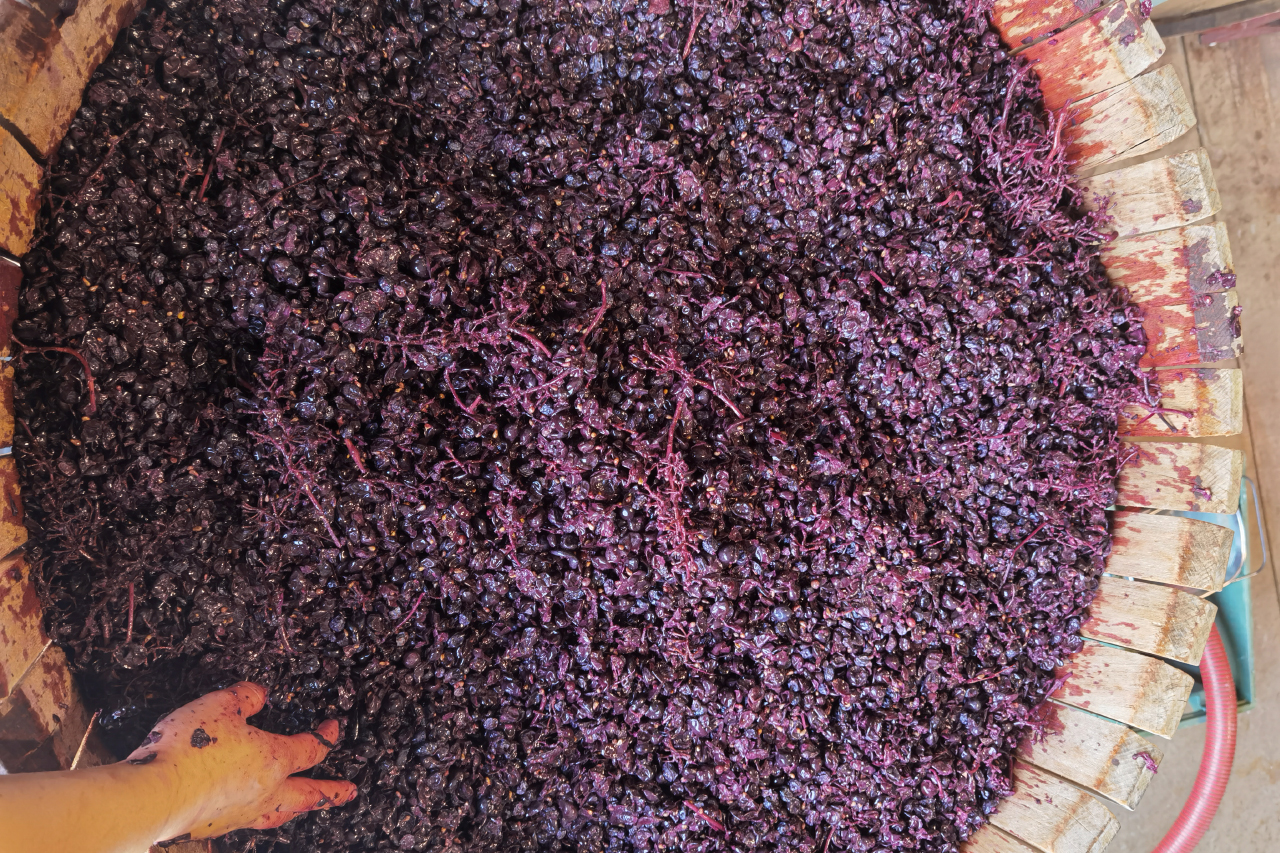
For most of his cuvées, Philippe destems the fruit then selects the ripest stems to put back into the vat for primary fermentation and maceration.
Pierre Noire, our top cuvée, is a selection of the smallest bunches of Grenache and Syrah that we can find in the vineyards. Usually, vines for this wine are growing directly on the bedrock, the reason why it is called black rock, but also because of the shade of the nearby forest. The yields are so low that the berries are like an extract of fruit but in these specific vines the stems ripen evenly with the fruit and at harvest, they range in color from a deep golden to a rich brown. Due to the perfect balance of ripeness between grapes and stems, no matter how the vintage is overall, these stems release perfectly mature tannins with marked notes of cinnamon and grey pepper, without any greenness. Its aging potential is huge, it’s your choice to enjoy it now if you like powerful but elegant wines or to cellar it for many years.
Among my different Pierre Noire vintages, 2014 was fresher, which is a great unique quality in Provence which is far more accustomed to the heat and we had the leisure to carefully select the fruit for this cuvée over a long period finishing on October 31st! The high elevation of our mountains also reinforces the freshness in this wine and it provided both concentration and balance.
2016 was a much warmer vintage than 2014, and we have harvested from September 15th until October 15th, which is perfect. The hallmark of the 2016 vintage in the Southern Rhône is its very smooth tannins, and this is true with our Pierre Noire 2016. Though very concentrated, it is also quite elegant and has been greatly appreciated by the press and my longest customers. Due to its silky tannins, it can be enjoyed now but, as all of our Pierre Noire vintages, it can be kept for a very long time. Up to you depending on which style of wine you prefer, younger or older.
Enjoy the tasting of our different wines.
–Philippe Gimel, October 2020